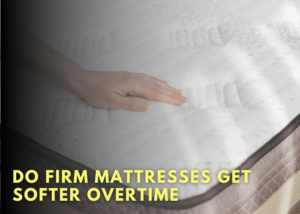Does the prospect of trying to find a comfortable sleeping position after back surgery fill you with fear?
According to the renowned John Hopkins hospital, sleeping on your back is a great way to sleep after back surgery. Avoid raising your arms above your head to reduce stress on the spine, and place a tightly rolled towel under the knees to prevent stretching the spine.
How to sleep after spine surgery?

If you have a firm mattress, this will help provide adequate support to the spine preventing any sagging.
Finding a way to sleep after back surgery may be bothersome to you, but the truth is when combined with medication, you can sleep on your back or side.
This may seem counterintuitive, but doctors from John Hopkins say that back sleeping is an excellent way to sleep postoperatively and the same for side sleeping.
The big NO is sleeping on your stomach. Sleeping on your stomach causes your spine to flex inwardly, which is not designed to do.
How to sleep after back surgery may be a personal choice given the information from John Hopkins hospital. If you are not experiencing undue postoperative pain and do not have contrary instruction from your doctor, sleep in the most pain-free position.
Is sleeping after a discectomy difficult?
How to sleep after a discectomy is really up to the individual. There are no hard and fast rules regarding what position to sleep in.
Sleep with pillows for support and comfort, and remember you can only sit for a maximum of 30 minutes at one time, so when you sit on the edge of your bed, keep this in mind.
The main area of concern is how to get out of bed. You will need to avoid twisting the torso, which can be a challenging experience.
What’s the best way to sleep after spine surgery?
There are many forms of spine surgery, depending on your condition. Your surgeon will select the best procedure to resolve your issue.
One such procedure is kyphoplasty. It’s a way of introducing cement into your sine to resolve your pain issues.
But how do you sleep after kyphoplasty? Most spine surgery techniques require similar aftercare, and part of the aftercare is letting you know the best sleeping positions for your comfort.
Sleeping on your back is generally a good idea after kyphoplasty. Use pillows of varying densities to give support and for comfort.
A tightly rolled towel under the knees will prevent stretching the spine unduly.
You may have some local soreness on the injection site, but this will dissipate quickly and usually has completely subsided in 3 days after surgery.
A more significant issue to keep in mind is not to twist your torso excessively, placing stress on the newly fused vertebrae.
How should I sleep after spinal fusion surgery?
It is essential to sleep on a decent mattress. If your mattress is old and sags in the middle, you are running the risk of further injury and possibly damaging the surgical procedure.
Finding a way to sleep after a joint fusion may not be as difficult as you first thought. Sleep on a firm mattress without depressions from wear and tear.
Before you sleep, take your pain medication as prescribed and at the frequency it has been prescribed. This will speed up the healing process.
Keep your medication on the side stand with a glass of water. You will need to set the alarm to wake up and take your meds at the prescribed time.
It is acceptable to sleep on your back. This is how many spine patients find how to sleep after spine fusion.
Place a cushion or tightly rolled towel under your knees. This will flatten your spine to the mattress giving the most support.
Surround yourself with pillows to help prevent a possible fall from the mattress. It’s a good idea to sleep in the center of the mattress and make your partner sleep.
Unless otherwise instructed, it is permissible to sleep on your side.
As with most spine surgeries, it is more important to avoid twisting the spine. Some twisting is necessary but try to minimize twisting your torso.
Sleeping on your stomach is not recommended. When you sleep on your stomach, your spine flexes unnaturally. Of course, if this is your favorite position, use pillows to prevent any stress on the spine.
Should you sleep on the side or back after lumbar surgery?
Here is what is important after lower back surgery. Managing your pain will help with the recovery process. Take your pain management as prescribed at the frequency prescribed.
Deciding on how to sleep after lower back surgery depends on you. If you have a favorite sleeping position and it’s not painful for you, then it’s okay, Except sleeping on your stomach.
If you decide to sleep on your back, use a pillow under your knees. This allows your spine to lay flat against the mattress and takes the tension off the spine, particularly the lumbar region.
You may wish to elevate your shoulders slightly by using pillows; this is perfectly fine if it’s a good sleeping position for you.
It’s okay to sleep on your side if your doctor says so, but don’t forget to sleep with a pillow between your knees.
Sleeping with a pillow between your knees helps keep the spine aligned and reduces stress to the spine. It’s also a comfortable way to sleep.
To sleep, best avoid taking naps in the daytime. It can prevent you from drifting off to sleep when it’s time for bed.
Sleep is a big part of the healing process, and anything that helps with getting a good night’s sleep is recommended.
Discuss your sleeping position with your surgeon, we are all different, and maybe you have special requirements to heal in the best possible way.





